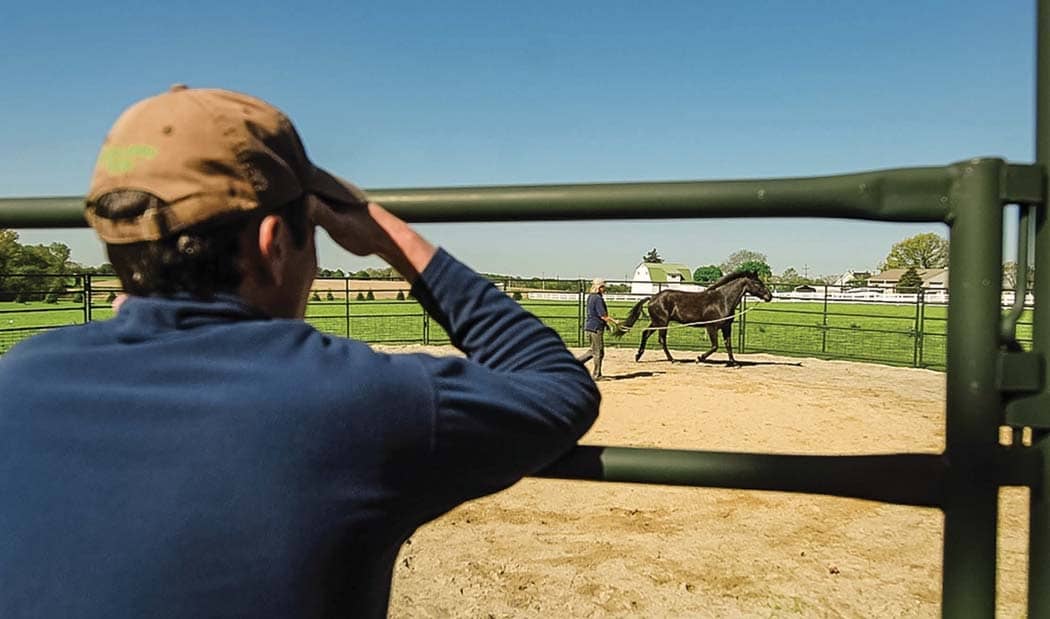A BETTER WAY TO READ THE SIGNS OF LAMENESS
Equus
|Autumn 2020
Equine lameness can be difficult to detect, but a study from England confirms the reliability of a relatively new tool for identifying subtle signs of musculoskeletal pain in horses.


Developed at the Animal Health Trust in Newmarket in 2018, the Ridden Horse Pain Ethogram (RHpE) is a compilation of 24 behaviors, such as “head tilting,” “tail swishing” and “spontaneous changes of gait,” that have been proven to correlate with musculoskeletal pain (see “A System for Identifying Lameness,” opposite). If a horse exhibits eight or more of the behaviors, chances are good he is lame.
Undiagnosed lameness has a far-reaching impact on the lives of horses and their riders, says Sue Dyson, VetMB, PhD. “One of the reasons I was incentivized to develop a RHpE was I had become so dispirited by seeing so many horses who clearly had pain-related problems that had been ignored for far too long,” she explains. “The horse, the rider, the training technique were being blamed over and over again. Coercive training techniques were being used. Longer whips, spurs, tighter nosebands, ‘stronger’ bits were being employed. Moreover, veterinarians did not understand what they were looking at either ---if an enlightened owner sought advice, and there was no obvious lameness seen in hand, they were told that the horse had behavioral problems.”
Bu hikaye Equus dergisinin Autumn 2020 baskısından alınmıştır.
Binlerce özenle seçilmiş premium hikayeye ve 9.000'den fazla dergi ve gazeteye erişmek için Magzter GOLD'a abone olun.
Zaten abone misiniz? Oturum aç
Equus'den DAHA FAZLA HİKAYE

Equus
PROGRESS AND STRUGGLE IN SENIOR HORSE CARE
A study from the Cummings School of Veterinary Medicine at Tufts University confirms what many dedicated horse owners have long known: Caring for a geriatric horse with a chronic health condition can be a significant physical and emotional burden.
5 mins
Winter 2020

Equus
THREE WAYS TO PREVENT BLANKET INJURIES
Of all the things your horse could injure himself with, his blanket seems an unlikely candidate. But don’t rule it out. Blanket mishaps do happen and they can be serious. Here are three things you can do to avoid them:
3 mins
Winter 2020
Equus
PUT AN END TO BARN DRAMA
While it’s impossible to prevent all discord at the barn, conflict resolution techniques can help solve problems, restore calm and enable everyone to enjoy their horses.
12 mins
Winter 2020

Equus
The turning point
You don’t always get the horse you want, but sometimes you get the one you need.
6 mins
Winter 2020

Equus
A FOREVER HOME
How a Facebook post led to a midnight rescue and an unexpected partnership
3 mins
Winter 2020

Equus
Nice work if you can get it
A career focused on horses is not for the faint of heart but the rewards are many and can last a lifetime.
3 mins
Winter 2020
Equus
MAKE WINTER EASIER FOR YOUR OLD HORSE
The season ahead may be hard on aging horses in cold climates but with some planning and preparation you can help yours sail through until spring.
15 mins
Winter 2020
Equus
7 THINGS YOU MAY NOT HAVE KNOWN ABOUT TETANUS
With modern vaccines and wound management practices, tetanus is almost a thing of the past. But the threat persists, so it’s wise to remember which horses are most at risk and why.
15 mins
Winter 2020

Equus
THE FIRST AMERICAN “SPORT HORSE” BREED
The very name of the American Standardbred reflects the performance requirement established at the inception of the breed. Here’s how genetics, conformation and training came together to create horses that could trot a mile in 2:30 or less, or pace it in 2:00 flat.
8 mins
Autumn 2020

Equus
THE 6 WAYS HORSES LEARN
You’ll be more successful in teaching your horse new skills or maneuvers if your lessons, timing and tasks are aligned with his natural modes of acquiring information.
13 mins
Autumn 2020
Translate
Change font size

